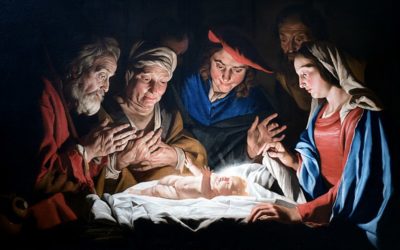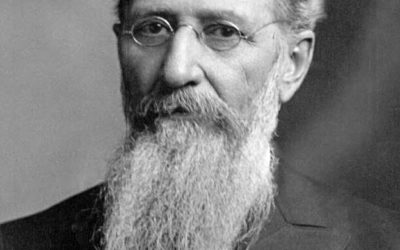As a parent and grandparent, I have often taken small children on walks. It is fascinating to observe these children as they encounter nature. Often they discover objects that adults ignore, including sticks and stones that they routinely pick up to examine and may even wish to take home with them.
Early human beings did the same thing, seeing value in sticks and stones as art objects and especially weapons. Sticks and stones as weapons also became symbols of power, and over the millennia, kings and queens, emperors and empresses, pharaohs, and other rulers displayed such sticks and stones as staffs, scepters, swords, maces, axes, spears, crowns, orbs, and jewels.
The Bible also features sticks and stones as powerful or symbolic objects. Jacob had a staff (Genesis 32:10), as did David (1 Samuel 17:40). Young David “took his staff in his hand, and chose him five smooth stones out of the brook, and put them in a shepherd’s bag which he had,” and went to battle Goliath. Benaiah the son of Jehoiada pitted his staff against an Egyptian’s spear and beat him (2 Samuel 23:21; 1 Chronicles 11:23).
In 2 Kings 4, Elisha sends Gehazi to lay his staff on the face of a dead child. Later, Elisha raises the child to life. In Judges 6:21, an angel with a staff visited Gideon and uses the staff to call fire out of a rock. “Then the angel of the Lord put forth the end of the staff that was in his hand, and touched the flesh and the unleavened cakes; and there rose up fire out of the rock, and consumed the flesh and the unleavened cakes.”
In Psalm 23:4, David famously says to the Lord, “thy rod and thy staff they comfort me.”
In Genesis 30:37‒41, Jacob uses rods to enhance his stock. In Exodus 4, God works miracles with Moses’ rod, and when Moses returns to Egypt after his sojourn in Midian, he takes “the rod of God” with him, using it to do many miracles there (Exodus 7‒10).
When the children of Israel leave Egypt and reach the Red Sea, Moses uses his rod to divide the waters, allow the children of Israel to pass safely, and destroy the Egyptians (Exodus 14). In Exodus 17, Moses uses the rod to call forth water out of the rock (see also Numbers 20). Also in Exodus 17, the children of Israel prevail against Amalek so long as Moses, “with the rod of God” in his hand, hold his hands up with the help of Aaron and Hur.
In Numbers 17, God caused Aaron’s rod to bud and blossom, and it was kept in the tabernacle after that “for a token” (see also Hebrews 9:4).
In Genesis 28, the Old Testament patriarch Jacob has his famous dream, sees angels, and converses with God after he “took of the stones” nearby and used them “for his pillows.” In the morning, he “took the stone that he had put for his pillows, and set it up for a pillar, and poured oil upon the top of it,” calling the place Beth-el or “house of God.” He made a covenant with God and declared, “this stone, which I have set for a pillar, shall be God’s house: and of all that thou shalt give me I will surely give the tenth unto thee.”
Similarly, when Jacob made a covenant with Laban in Genesis 31, he “took a stone, and set it up for a pillar.” He then had his brethren gather stones in “an heap,” telling Laban, “This heap is a witness between me and thee this day.”
Jacob had another encounter with God in Genesis 35, going through a covenant ceremony that included getting the new name of Israel. After he spoke with God, “Jacob set up a pillar in the place where he talked with him, even a pillar of stone: and he poured a drink offering thereon, and he poured oil thereon. And Jacob called the name of the place where God spake with him, Beth-el.”
When Moses and the children of Israel came out of the land of Egypt, they used onyx stones “to be set in the ephod and in the breastplate” of the high priest (Exodus 25:7). On these were engraved the names of the sons of Israel, six on one and six on the other, and the stones were put on the shoulders of the ephod and born “before the Lord” as part of the high priest’s clothing. The breastplate was also set with precious stones. (Exodus 28, 35, 39)
The breastplate contained the Urim and Thummim (Exodus 28:30; Leviticus 8:8), which were used to obtain revelation (Numbers 27:21; 1 Samuel 28:6; Ezra 2:63; Nehemiah 7:65).
When the children of Israel came to the promised land, Joshua “made a covenant with his people,” recorded it in “the book of the law of God, and took a great stone, and set it up there under the oaks by the sanctuary of the Lord,” saying “this stone shall be a witness unto us” (Joshua 24:25‒27). Later, Samuel “took a stone,” set it up, “and called the name of it Eben-ezer, saying, Hitherto hath the Lord helped us” (1 Samuel 7:12).
(To Be Continued)



